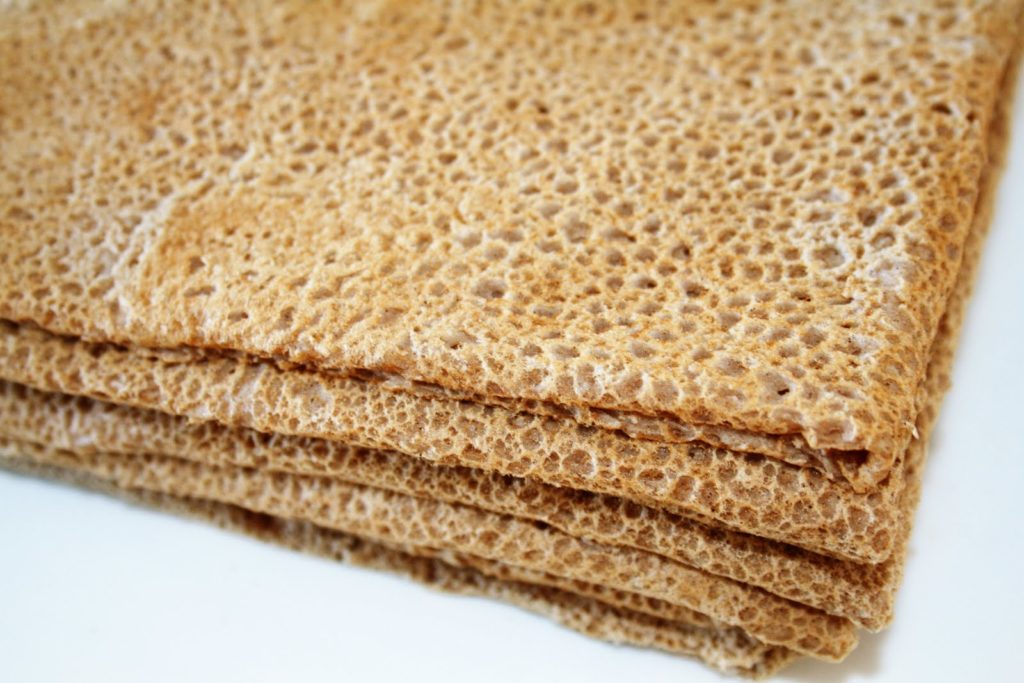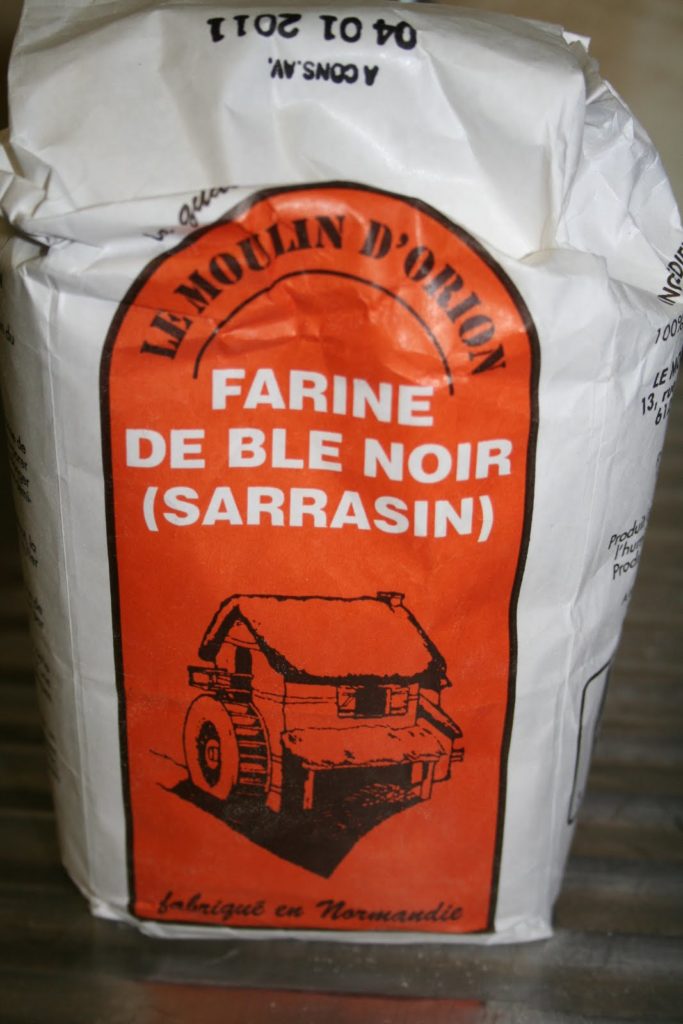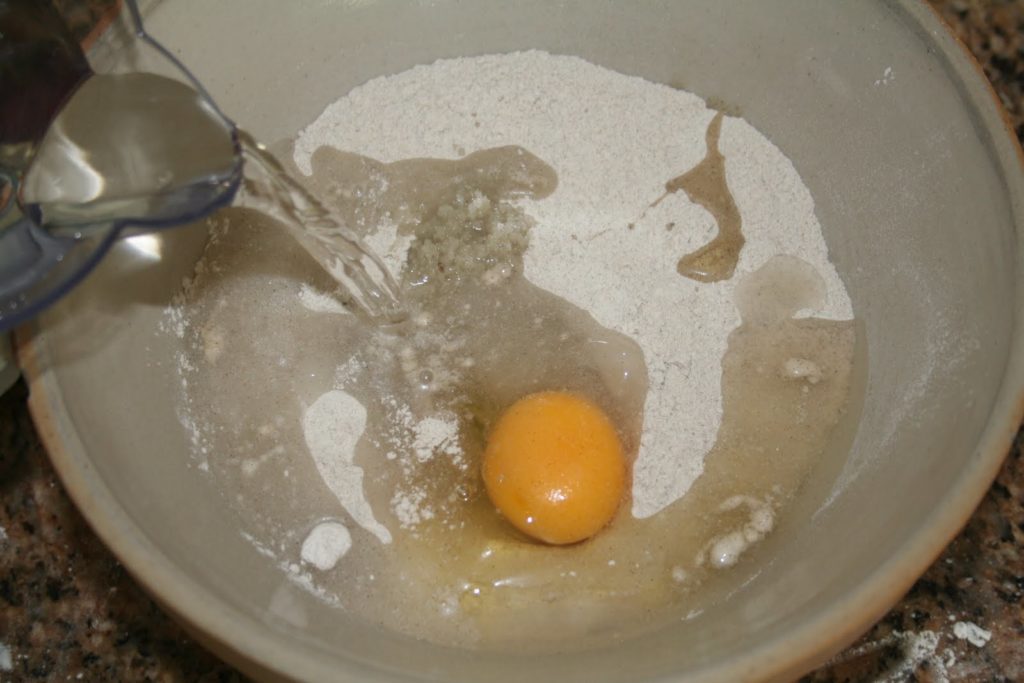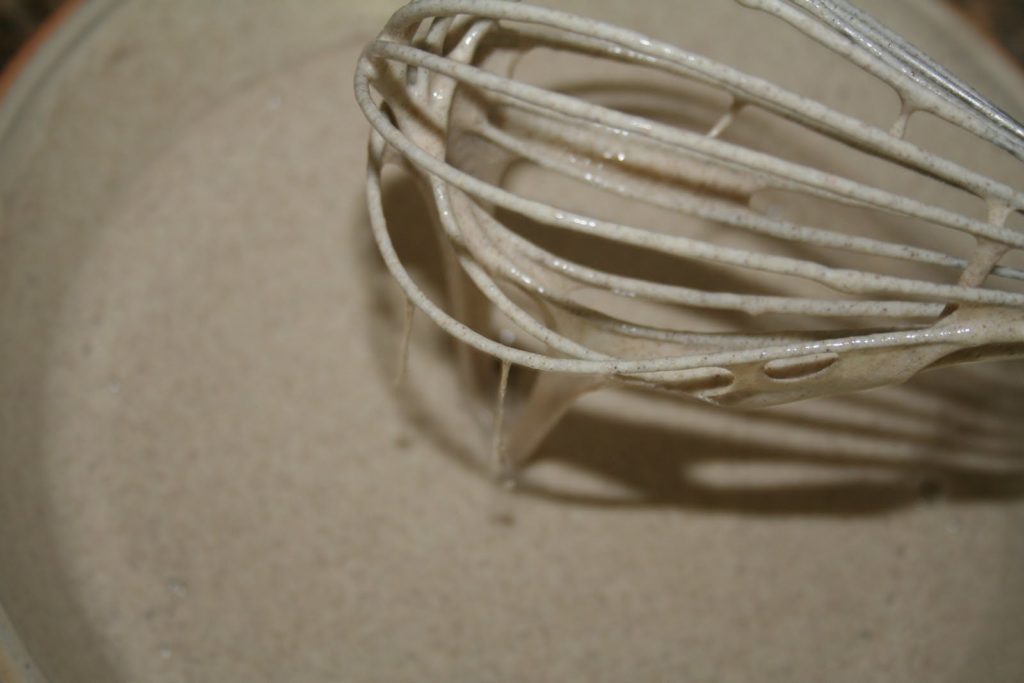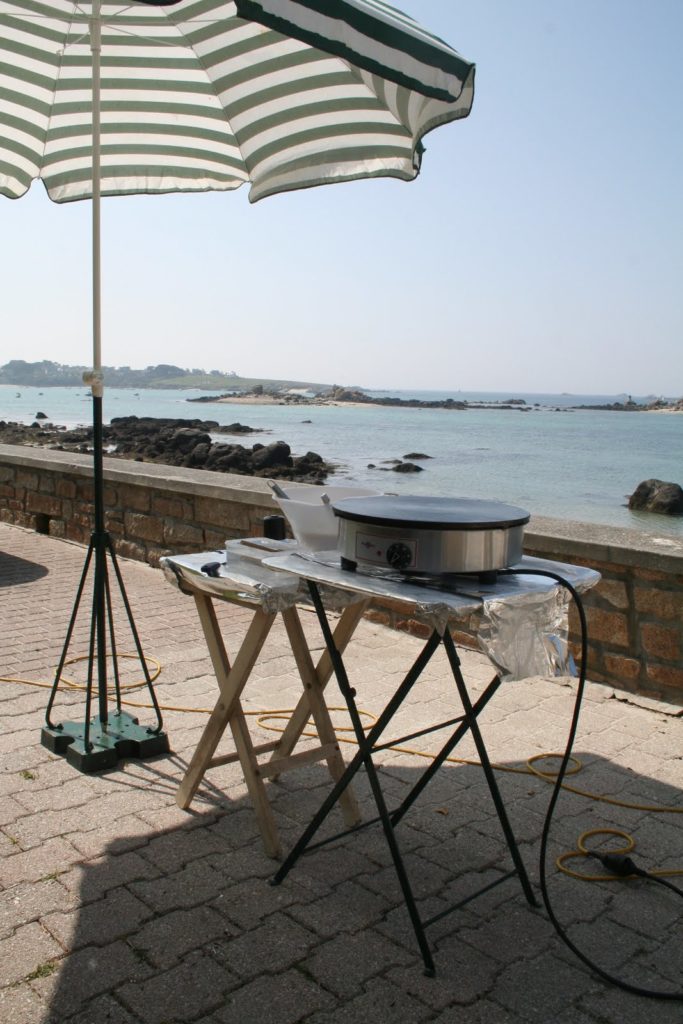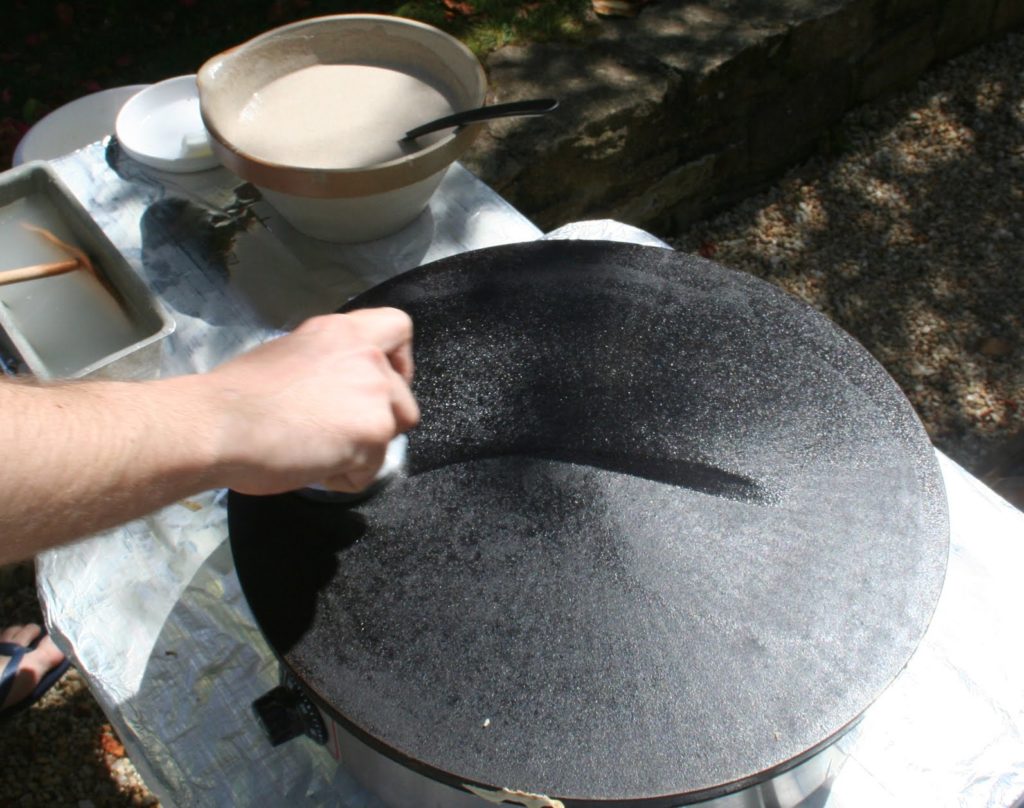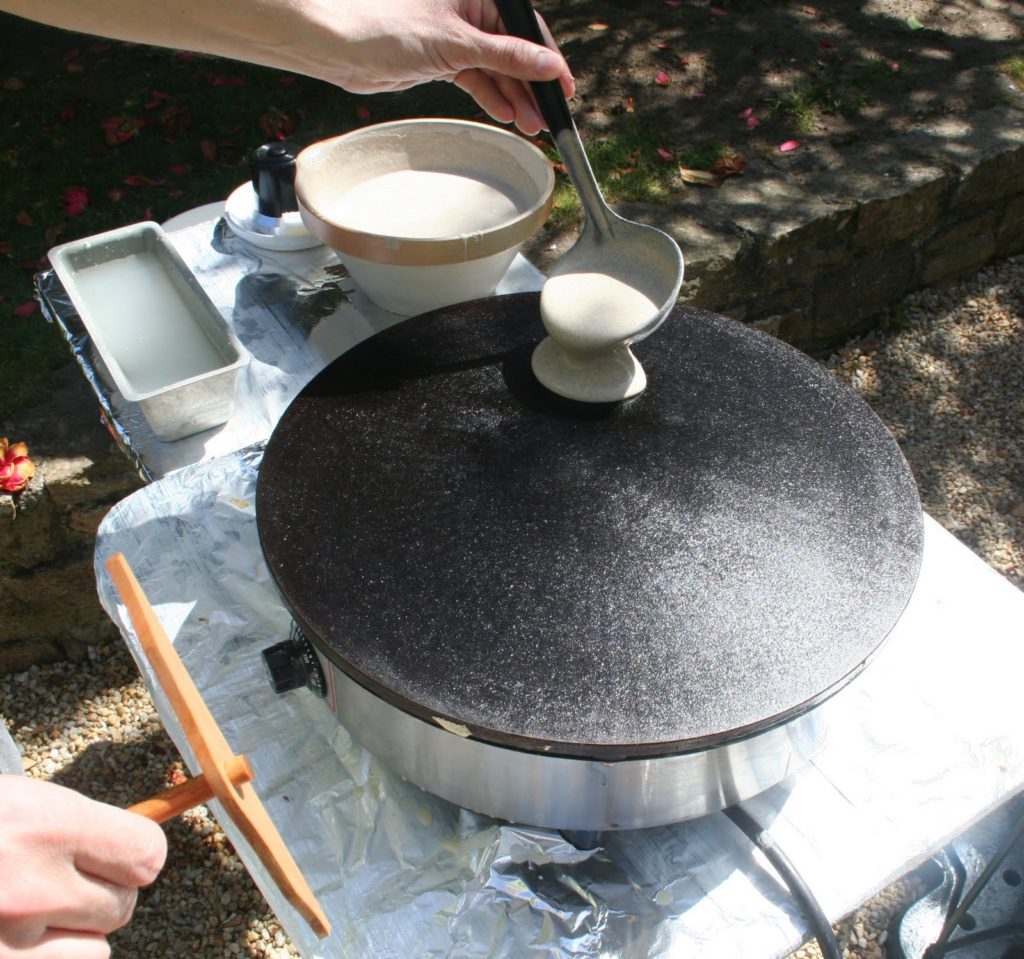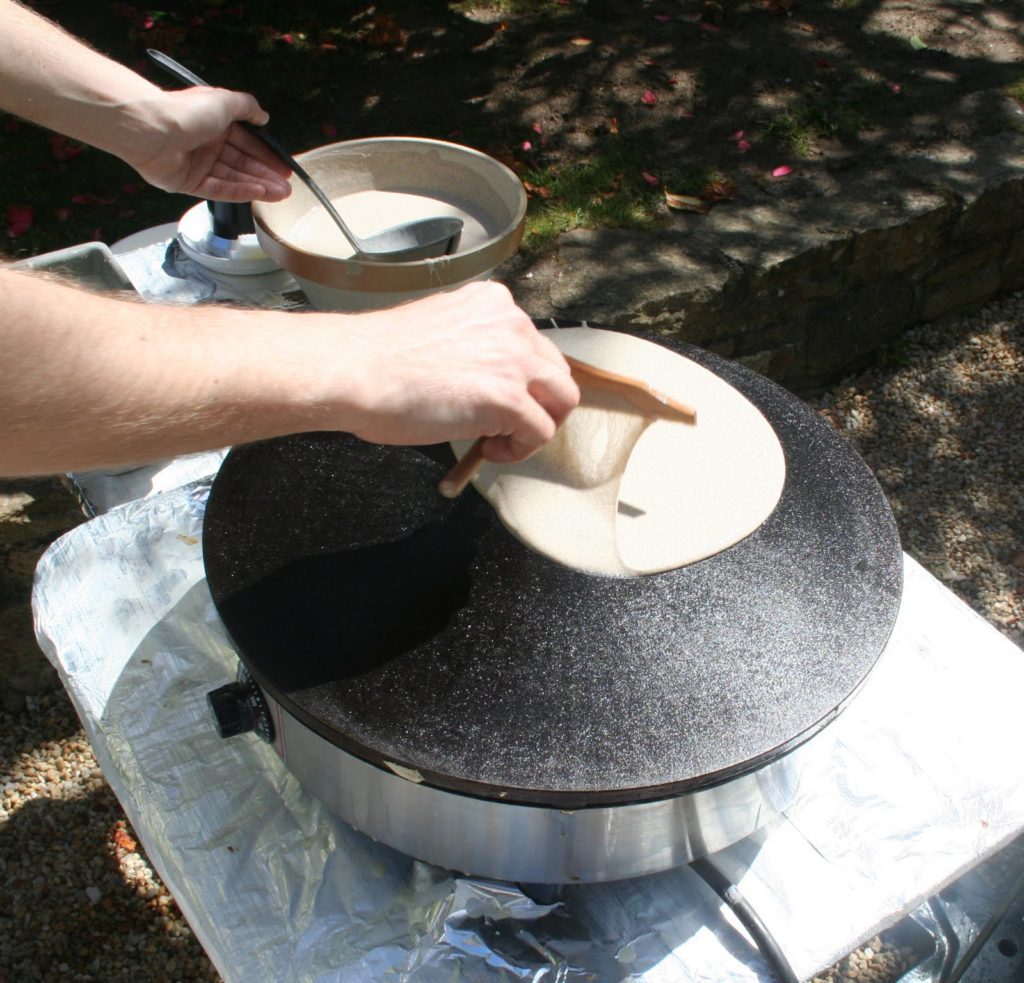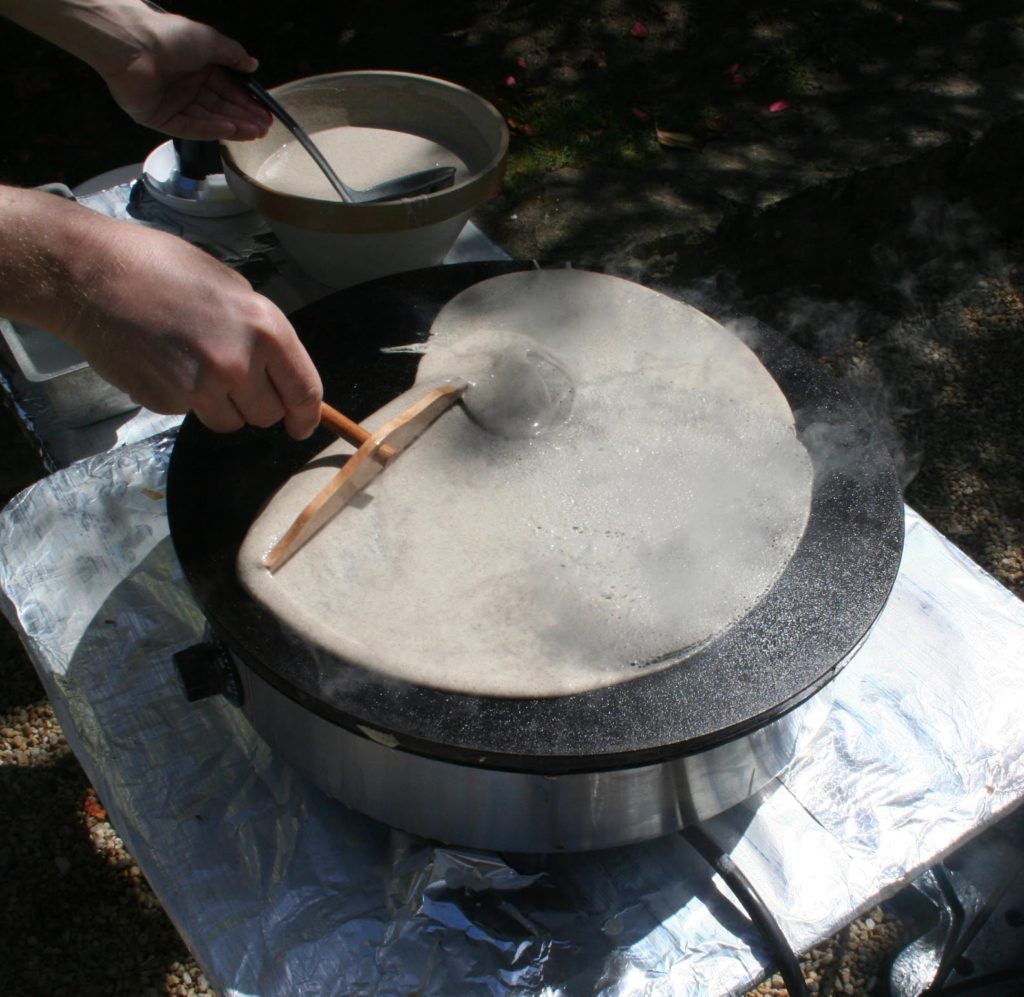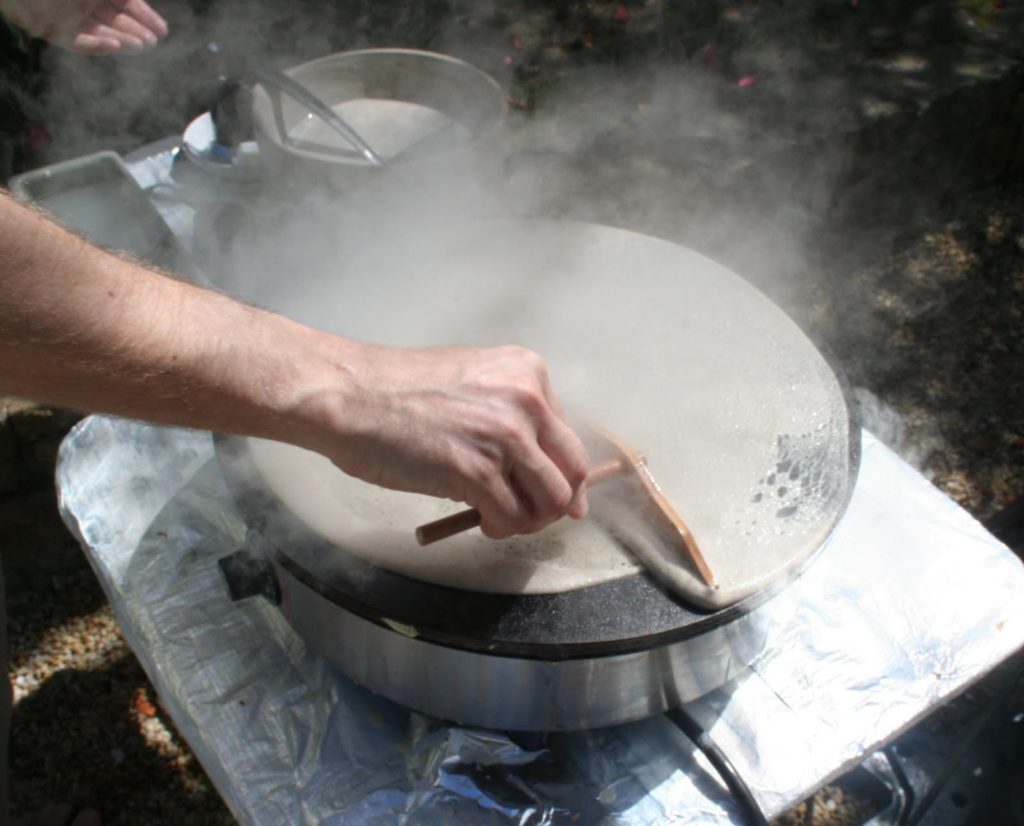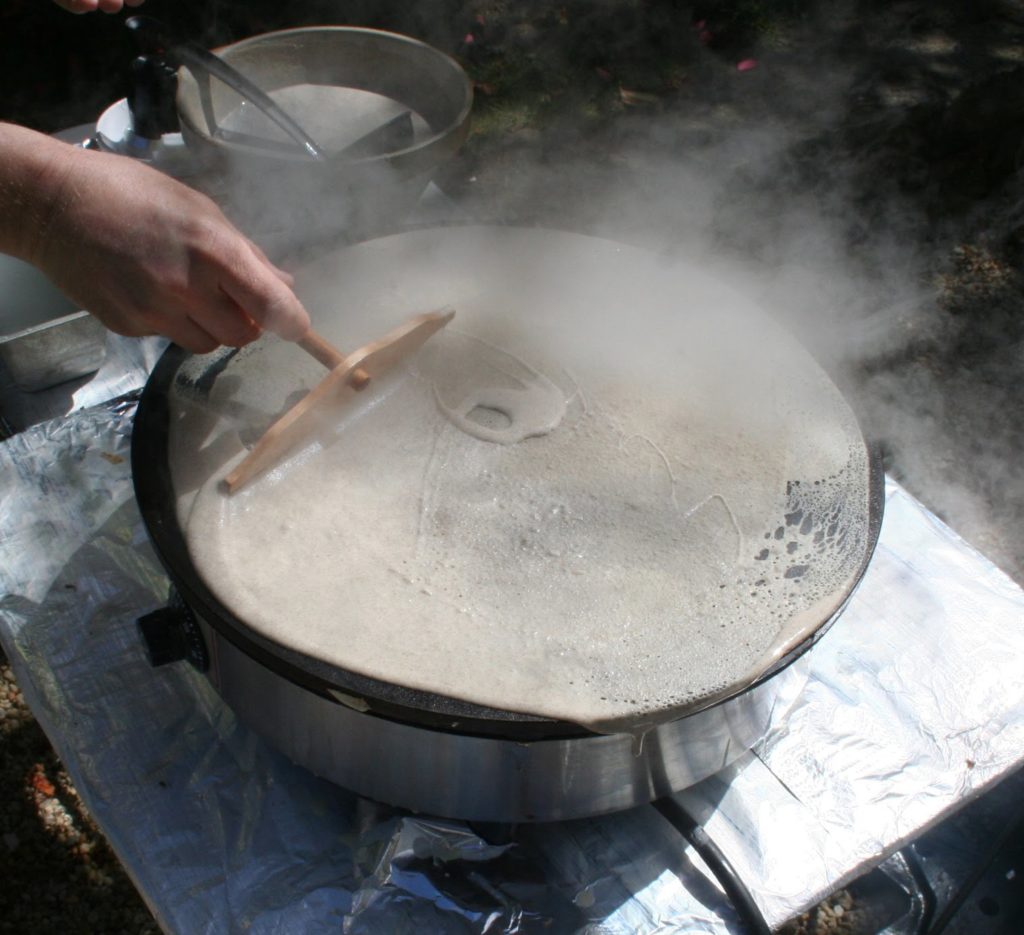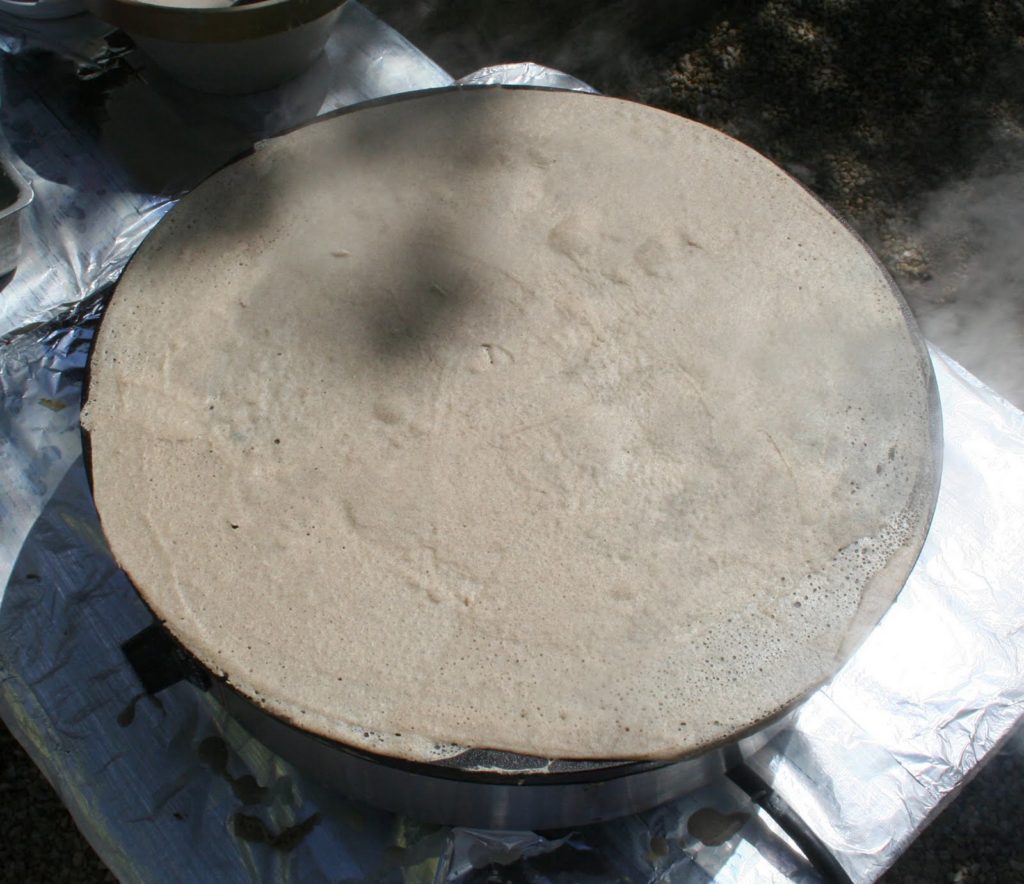The gesture is simple but there are so many components in it, from the way to hold the rozell, to hold the ladle with the left hand, to not press on the batter, to make this comma movement, to obtain a round pancake, that this gesture takes time to be automatic. We think too much at the beginning to have a good result but finally as long as everything is not thoughtless and natural, the pancakes do not succeed.
So it takes patience and tenacity, but once you’ve digested all this, it’s really easy and fun to make your own pancakes.
There is a multitude of pancake recipes, almost one recipe per Breton town. I have at home the recipes of the pancakes of Quimper, Pleyben, Pontivy, Sablé, of the Bigouden Country, of Carhaix, the old recipes of Basse-Bretagne. But also the crepes of the Pardon, of Jeanne-Marie, the recipes of Léon, of Tregor of the South Finistère…. In short, a whole range of recipes.
Recipe for “buckwheat patties” for 18 patties:
-500g buckwheat flour
-1 egg
-500ml of water for the dough + 500ml to finalize
-a handful of coarse salt
A dough piece is then obtained. It is usually advisable to leave this dough (which is liquid!) in the fridge for 24 hours. It will then ferment and the patties will have a better flavor and texture. Also, there will be a lot of shrinkage (those little bubbles that appear during cooking!).
Three reasons for leave the rozell in the water between each pancake:
1-the wood will swell and the joint between the rake and the handle will be perfect.
2. The paste that may be stuck to the rake will have time to dissolve, so the rake remains clean.
3-the rake cools in the water, because if the rake heats up a lot on the bilig, the pancake batter will stick to the rozell!
I work the pancakes (on the advice of Ty Bernic!) on a bilig at 240°C. This way, the pancakes are seared and keep their softness! They cook very quickly. They can of course be cooked on two sides, but to prepare plain pancakes they can be cooked on one side only. When the bilig is at the desired temperature, grease it with the pad lightly soaked in lard. You must not grease the bilig too much otherwise the dough will slip and stick to the rozell.
With the left hand (if you are right-handed) you pour a full ladle of dough while the right hand is ready with the rozell. This ladle should be poured at 10 am on the bilig.
For my part, if I prepare pancakes in advance, I cook them only on one side. It’s up to you, but even so, the pancakes are well cooked and fluffy!

